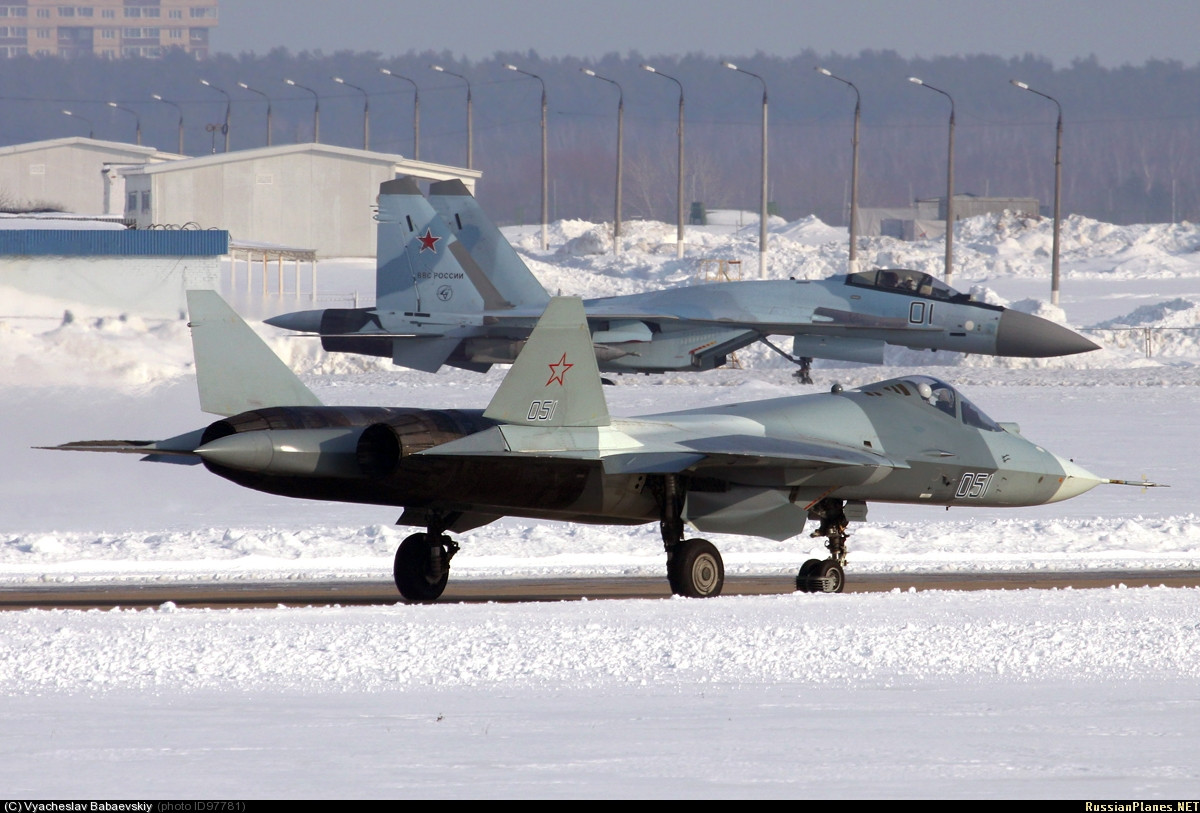Russia and India to work on 5th-gen upgrade to Su-35 fighter
Russia and India have signed an agreement to jointly develop a fifth-generation upgrade of the Su-35 Super Flanker multirole fighter, according to a report published March 8 on Virginia-based military affairs website Defense News.
The fighter will be a fifth-generation fighter like the US Lockheed Martin F-22 Raptor and F-35 Lightning II, as opposed to the fourth-generation version of the Su-35 over which Russia and China are currently negotiating a deal.
The Su-35 Super Flanker will be unable to compete with other "genuine" fifth-generation fighters and China does not need to get caught up in a game of one-upmanship with India and Russia, said an expert cited by China's nationalistic tabloid Global Times.
Fifth-Generation Su-35S
Defense News cited a Russian military insider as stating that Moscow and New Delhi have signed an agreement to design what Russia is calling the fifth-generation version of the Su-35 in India, which will see an Indian variant of the fighter created called the Su-35S. Sergey Chemezov, CEO of Russian state-run tech export corporation Rostec, was cited by the website as saying, "We have been negotiating and have signed the intention protocol for the Su-35...Now we are working on designing ideas for this contract and on creating a manufacturing platform for the aircraft of the fifth generation."
The shift from the fourth-generation Su-35, currently in service with the Russian Air Force, to the fifth-generation Su-35S will necessitate a large upgrade. The report in Defense News questioned the ability of the Su-35S to bear comparison with the F-35. An Indian Air Force official said Russia has pitched the Su-35S several times over the last six months, stating that it can replace the Indian Air Force's MiG-21 and MiG-27 fighters, set to be retired from service in seven to eight years.
Russia and India have already worked together on the development of a fifth-generation stealth fighter, the PAK FA T-50. The Defense News report suggested that the reason Russia has suddenly announced the development program for the stealth fighter is because they are trying to undercut France following the refusal of Paris to provide Russia with two Mistral-class amphibious assault ships. In 2012, New Delhi decided to buy 126 Dassault Rafale multirole fighters from the French company but they have been unable to reach a final agreement due to the technology transfer involved and the price. A Russian industry source cited in the report said the Su-35S will cost only US$85 million, very competitive when compared with the Rafale, and poses a threat to the deal between France and India. A report in the New Delhi-based Economic Times previously stated that India's air force command considers the Russian fighter and the Rafale to be complementary and that the former does not replace the need for the latter.
China and the Fourth-Generation Su-35
There had previously been a lot of buzz in the media about China becoming the first country to take delivery of an Su-35. According to the previous report on the website, China is set to sign a deal on May 19 to buy 24 Su-35 fighters from Russia. A Russian official has stated that the deal involves the fourth-generation Su-35, not the fifth-generation Su-35S. The official added, however, that China will be the first country in the world to buy the plane.
The Defense News report did not specify the details of the differences between the Su-35 and the Su-35S. However, a Chinese military expert cited by the Global Times stated that the fifth-generation fighter will likely be based on the Su-30MKI that Russia and India developed together and will be equipped with advanced fifth-generation fighter avionics purchased by India, including active electronically scanned array radar, an infrared sensor for longer range targets and a custom tactical data link suited to the needs of the Indian Air Force, along with anti-electrical interference equipment. The source also stated that the fighter likely has limited stealth capabilities, including metal plating on the hood of the cabin and stealth materials coating the air inlets. Stealth capabilities hinge mostly on the exterior design of a fighter, however, he said. The area of the fifth generation F-22 that reflects radar is just 1 square meter and Russian aircraft maker Sukhoi has stated that the area of Su-30 series fighters that reflects radar is around 20 sq m.
As the Su-35S will not involve a total rehaul of the outer structure of the series, it is not possible for the Su-35S to match the stealth capabilities of the F-22. The move to brand the Su-35S a "fifth-generation" fighter, therefore, seems a little more driven by propaganda than reality, according to Global Times. Given that the Su-30MKI went into production in 2002, six years after India and Russia signed the joint development agreement on the aircraft, the Su-35S will likely take a sustained period of time to develop and undergo tests before it can be commissioned or sold.
Can the Fourth- to Fifth-Generation Gap be Bridged?
A Chinese military expert stated that fourth-generation fighters can be upgraded to give them capabilities approaching those of fifth-generation fighters. This is most evident in the area of avionics, if enough investment is made, as with sufficient funds the avionics of the Su-35S could surpass those of the T-50. Through the purchase of fifth-generation directional efflux nozzles with a large thrust to weight ratio, the Su-35S could reach a level of subsonic maneuverability equal to that of the T-50.
In terms of the exterior there is still quite a large gap between fourth- and fifth-generation fighters, however. Especially in terms of supercruise and stealth capability, aspects in which the Su-35S cannot compete with the F-22 or the T-50. The Chinese expert stated that China and India should not bicker over which Su-35 is more advanced, as the Su-35 is simply a complementary aircraft which will play a transient role in China's air fleet. As the development of the Su-35S will also take time, China's domestically developed fifth-generation J-20 stealth fighter will likely already be ready to be commissioned by the time the Su-35S is ready for service.
http://www.wantchinatimes.com/news-subc ... 5&cid=1101
Aparentemente se trataria de um
Silent Super Flanker...
Imaginem vocês, um Su-35S com sensores e motores (falo do novo motor) do PAK-FA, correção de algumas curvas na fuselagem, estabilizadores em ângulo e uma baía de armamentos no vão entre os motores.... Talvez uma fração do desenvolvimento de um caça 5a geração puro, mas com eficácia aproximada, sobretudo se trabalhando em conjunto com estes... De se pensar!
abraços










